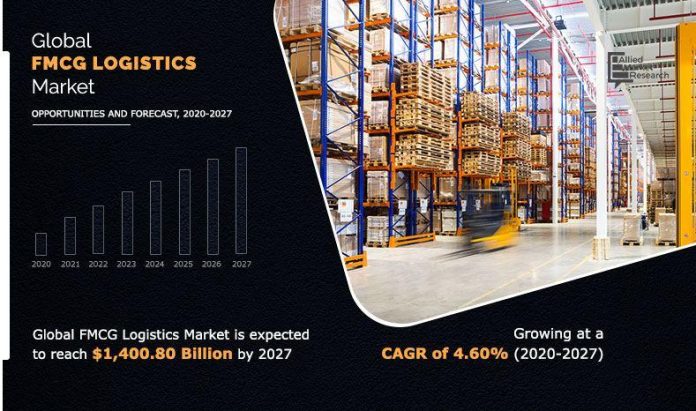FMCG Logistics Market Expected to Surpass $1.56 Trillion by 2032
The global FMCG logistics market is on track for robust growth, projected to expand from $1,056.58 billion in 2022 to $1,568.31 billion by 2032, according to a recent market analysis. This represents a compound annual growth rate (CAGR) of 4.1% over the ten-year forecast period, driven by rising product demand, expanding e-commerce, and evolving consumer buying patterns.
Key growth drivers include the increasing consumption of packaged goods—especially within food and beverage, personal care, and household segments—and the growing complexity of supply chains. Market players are responding by integrating advanced logistics technologies, including AI-enabled route optimization, warehouse automation, and real-time tracking systems, to enhance delivery performance and reduce operational inefficiencies.
Roadways Dominate Transport Segment
Among the logistics modes, the roadway segment continues to lead during the forecast period. The flexibility, nationwide penetration, and cost-efficiency of road transport make it the preferred option for last-mile delivery, particularly for time-sensitive FMCG products. However, investments in multimodal solutions are gaining momentum as FMCG companies aim to improve delivery speed and reduce carbon emissions.
Third-Party Logistics on the Rise
Third-party logistics (3PL) providers are playing a larger role in FMCG supply chains. Outsourcing logistics functions enables FMCG companies to focus on core competencies while leveraging the expertise, technology, and scale of 3PL firms. This trend is especially strong in emerging markets, where logistics infrastructure is still developing, and agility in distribution is crucial.
Asia-Pacific Leads Regional Growth
Asia-Pacific remains the fastest-growing region in the FMCG logistics sector, fueled by increasing urbanization, a rising middle class, and the rapid growth of e-commerce in countries such as China, India, and Southeast Asian nations. Regional governments are also investing heavily in infrastructure, further facilitating supply chain efficiency.
As supply chain resilience becomes a top priority amid global disruptions, FMCG companies are expected to continue investing in digital logistics technologies and strategic partnerships. The path ahead points to a more responsive, data-driven logistics ecosystem, aligned with evolving consumer expectations and market dynamics.

